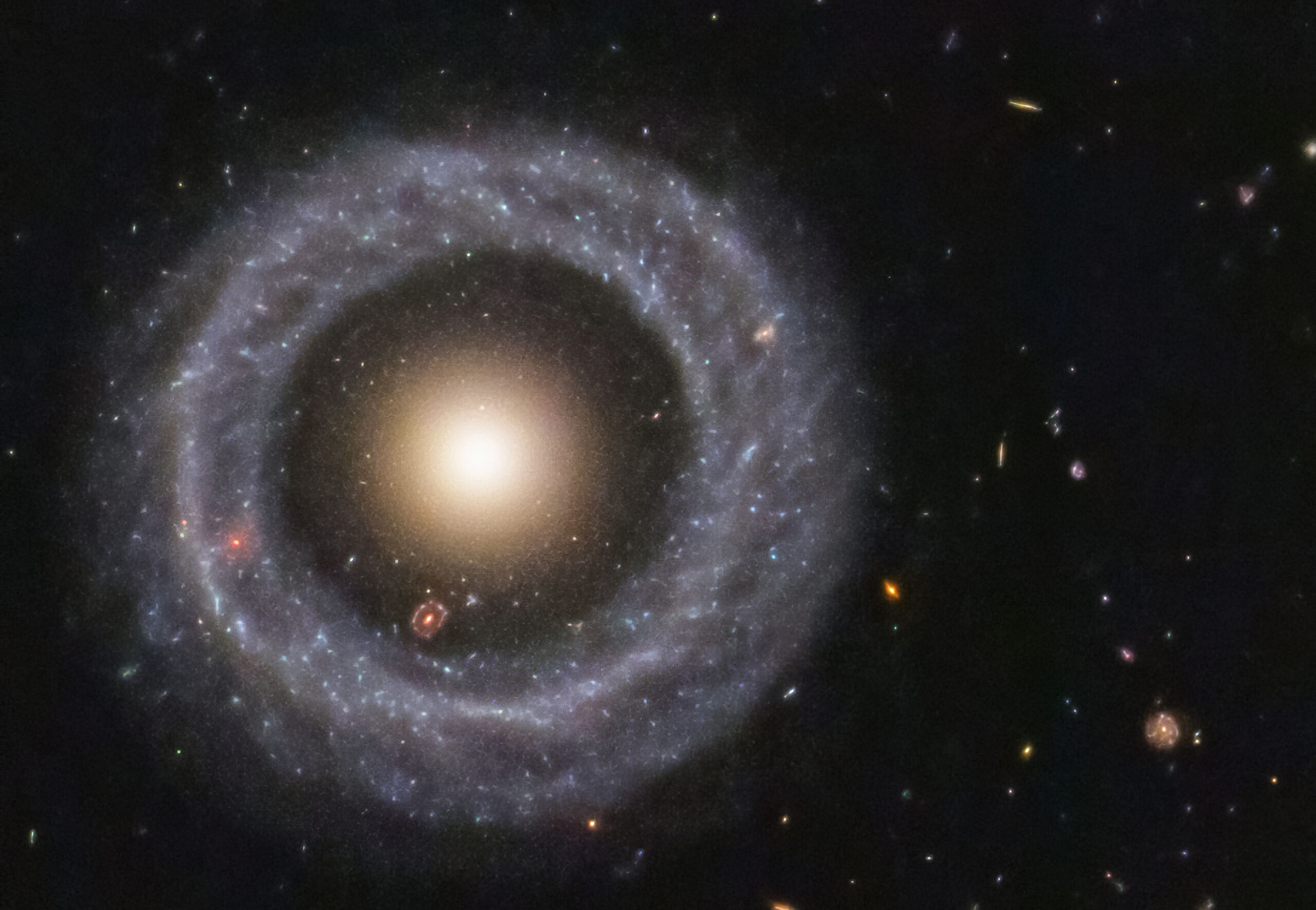Hoag's being is truly special.
If we could look about 600 million light-years from Earth, in the direction of the constellation Serpent, we could see a really distinctive ring galaxy, the Hoag Object, which formed about two billion years ago. However, thanks to the good old Hubble Space Telescope, we can show what this galaxy looks like, which is not much larger than the Milky Way, and is 120,000 light-years in diameter:
Ring galaxies are galaxies whose main feature is a bright ring-like structure around the circumference of the disk, with the galactic nucleus in the center. Such objects are likely created during interactions between galaxies under the influence of tidal forces. When a smaller galaxy collides through a spiral galaxy at high speed, the gravitational interaction triggers a wave of star formation in the disk, similar to ripples on the surface of a pond when pebbles are thrown in.
The Hoag Object is often referred to as the most perfect ring galaxy due to its almost perfect circular structure
The yellowish interior of the Hoag Object, the heart of the galaxy, is made up of older stars, and the nearly perfectly shaped bluish ring that orbits it is home to younger stars. Which separates the two star groups gap The visible part isn't immaterial either, it may actually contain clusters of stars too faint to be observed.
(source: NASA, HubbleImage: NASA, ESA, Hubble)
You may also be interested in:












































